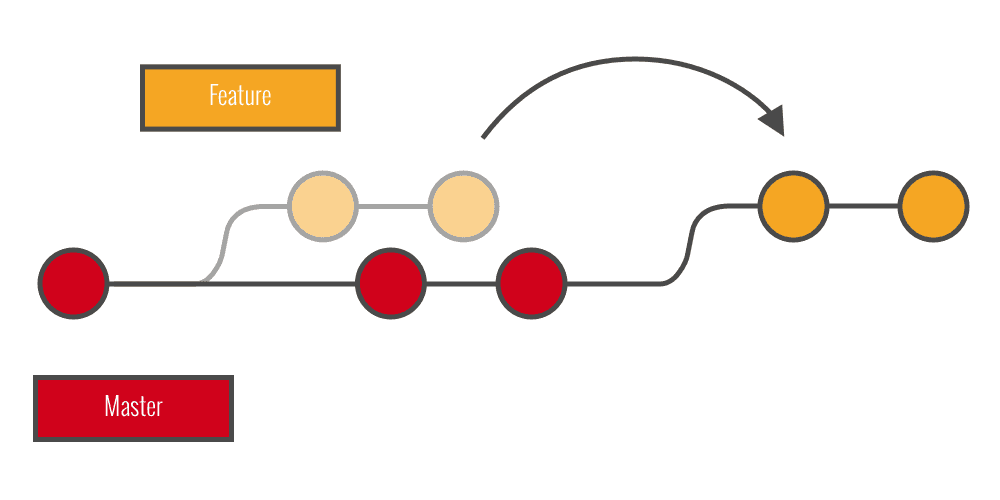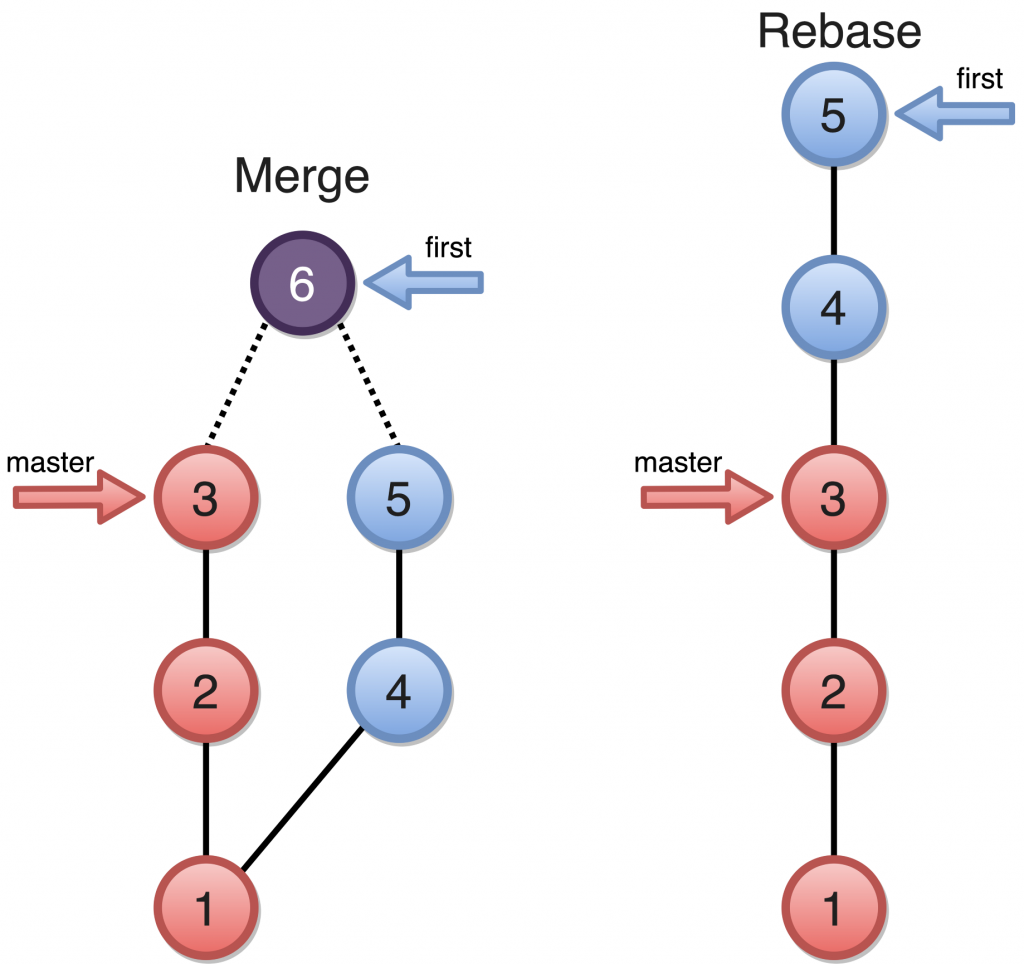
Rebasing is a process to reapply commits on top of another base trip. It is used to apply a sequence of commits from distinct branches into a final commit.
- Introduction
- Git rebase
- What is a rebase?
- What is the base of a branch?
- What does git rebase do?
- When do I use git rebase?
- When you rebase
- Rebase from the GitLab UI
- Rebase vs. Merge
- Conclusion
Introduction :-
Git rebase is effortlessly one of the maximum misunderstood instructions in Git. Beginners frequently have a tendency to reduce to rubble their operating tree the usage of this command the incorrect manner or fail to locate the distinction among git rebase and merge. So on this article, we attempt to provide an explanation for in element the usage of graphical representations what surely occurs and what does now no longer show up in git-rebase. This article is in a shape of a dialogue on rebasing in preference to a easy academic on a way to rebase.
- Regular rebase.
- Interactive rebase.
Git rebase :-

Rebasing is a completely not unusualplace operation in Git. There are the subsequent rebase options:-
- Rebase in literal phrases method to extrade the bottom of an object. Git rebase does the equal with git branches – it adjustments the bottom of the department.
- But what precisely is the bottom of the department and why will we do it? We solution those questions the following couple of sections of this articles.
What is a rebase?
- The base of a department is the devote from wherein it bifurcated from it’s determine department. It also can be described because the trendy devote that’s in not unusualplace with the department and its determine department. Here is a easy visualization to apprehend it.
- Feature 1 is the devote from which the function department deviated from the grasp department. So it’s miles the bottom devote of the function department.
- In git rebase we’re involved to alternate this base to any other devote because of this that that the Feature 2 devote will not factor to Feature 1 however a few different devote.
What is the base of a branch?
- This command rebases the modern-day department onto the goal department. This manner the modern-day department is now primarily based totally at the ultimate dedicate at the goal department. Consequently, the git dedicate-graph will seem like the department in no way separated from the unique department, and the commits have been primarily based totally at the modern-day base. This offers the dedicate-graph a linear-searching dedicate-graph.
- The command syntax isn’t always the maximum critical component, the critical component is how the command functions. If you reduce to rubble a git rebase, you may get a few undesirable commits and complicated dedicate graphs as opposed to linear smooth dedicate graphs which you wanted for. So allow us to apprehend git rebase in a touch greater detail.
- Git rebase as we mentioned at the start of the object modifications the bottom of the department. But this line is best in part true.
- These are the matters that we’d assume git rebase to do.
- Change the bottom of the department to the modern-day dedicate at the goal department.
- Keep the commits in my modern-day department unaltered.
- If git rebase accompanied this precept the git dedicate graph from determine 1 after the command git rebase grasp have to seem like:
- Comparing with the dedicate-graph given in Fig 1, it looks like the department in no way bifurcated from the grasp.
- But there may be a small seize we’re lacking here:
- Following the above approach will basically spoil the dedicate records of the commits made to that department. Any command that deletes or rewrites the git records may be a ability motive of the problem.
- If the commits at the function department are dated earlier than the more moderen dedicate at the goal department, the rebased department could have more moderen commits which can be older(with recognize to time) than the commits it’s miles primarily based totally on, developing an absolute paradox.
- To keep away from those troubles what git rebase really does is:
- Relocates the department head pointer to the goal department pointer. (function now factors to the grasp)
- Makes new reproduction commits at the department. These commits are basically the equal have the equal code modifications because the unique commits, however have exceptional SHA1 values.
- The older commits are nonetheless gift at the graph in a indifferent state.
- So allow us to in the end visualize what takes place in real git-rebase.
What does git rebase do?
Before we move into the info of the command, here’s a brief have a take a observe the syntax of the git command:-
- Git merge permits preserves dedicate records however the value of an additional dedicate and convoluted dedicate graphs.
- Git rebase continues the quantity of commits the equal however on the value of abstracting away dedicate records.
- So each department that you can merge may be likely rebased and vice-versa, however it advocated now no longer to rebase public/shared branches. While the usage of rebase the person have to preserve in thoughts the tradeoff among the keeping the records and easy dedicate-graph.
When do I use git rebase?
Git rebase is used simplest to have a easy searching linear dedicate-graph in contrast to the messy graph that git merge creates. So right here is the tradeoff among those two:-
- Git imports all of the commits submitted to important after the instant you created your characteristic department till the prevailing moment.
- Git places the commits you’ve got got for your characteristic department on pinnacle of all of the commits imported from important:
- You can update important with another department you need to rebase against, for example, release-10-3. You also can update beginning with different far off repositories, for example, upstream. To test what remotes you’ve got got connected on your neighborhood repository, you could run git far off -v.
- If there are merge conflicts, Git activates you to restore them earlier than persevering with the rebase.
When you rebase :-
- No merge conflicts exist to your characteristic department.
- You have the Developer function for the supply project. This function offers you permission to push to the supply department for the supply project.
- If the merge request is in a fork, the fork should permit commits from participants of the upstream project.
Rebase from the GitLab UI
You can rebase your characteristic department immediately from the merge request via a brief action, if all of those situations are met:-
- Now which you’ve visible rebasing and merging in action, you’ll be thinking which one is better. Before we are able to solution this, let’s step again a piece and communicate approximately what records means.
- One factor of view on that is that your repository’s dedicate records is a document of what virtually happened. It’s a ancient document, treasured in its very own right, and shouldn’t be tampered with. From this angle, converting the dedicate records is sort of blasphemous; you’re mendacity approximately what virtually transpired. So what if there has been a messy collection of merge commits? That’s the way it happened, and the repository have to maintain that for posterity.
- The opposing factor of view is that the dedicate records is the tale of the way your challenge changed into made. You wouldn’t put up the primary draft of a book, so why display your messy paintings? When you’re operating on a challenge, you could want a document of all of your missteps and dead-cease paths, however while it’s time to reveal your paintings to the world, you could need to inform a greater coherent tale of a way to get from A to B. People on this camp use gear like rebase and filter-department to rewrite their commits earlier than they’re merged into the mainline department. They use gear like rebase and filter-department, to inform the tale withinside the manner that’s quality for destiny readers.
- Now, to the query of whether or not merging or rebasing is better: optimistically you’ll see that it’s now no longer that simple. Git is a effective tool, and lets in you to do many stuff to and together along with your records, however each crew and each challenge is different. Now which you recognise how each of these items paintings, it’s as much as you to determine which one is quality on your specific situation.
- You can get the quality of each worlds: rebase neighborhood adjustments earlier than pushing to easy up your paintings, however by no means rebase something which you’ve driven somewhere.
Rebase vs. Merge :-

Conclusion :-
This brings us to the stop of the item on git-rebase. Visualizing git changed into used for the graphical illustration of git commands. Stay tuned for extra such articles on git and different open-supply programs.




